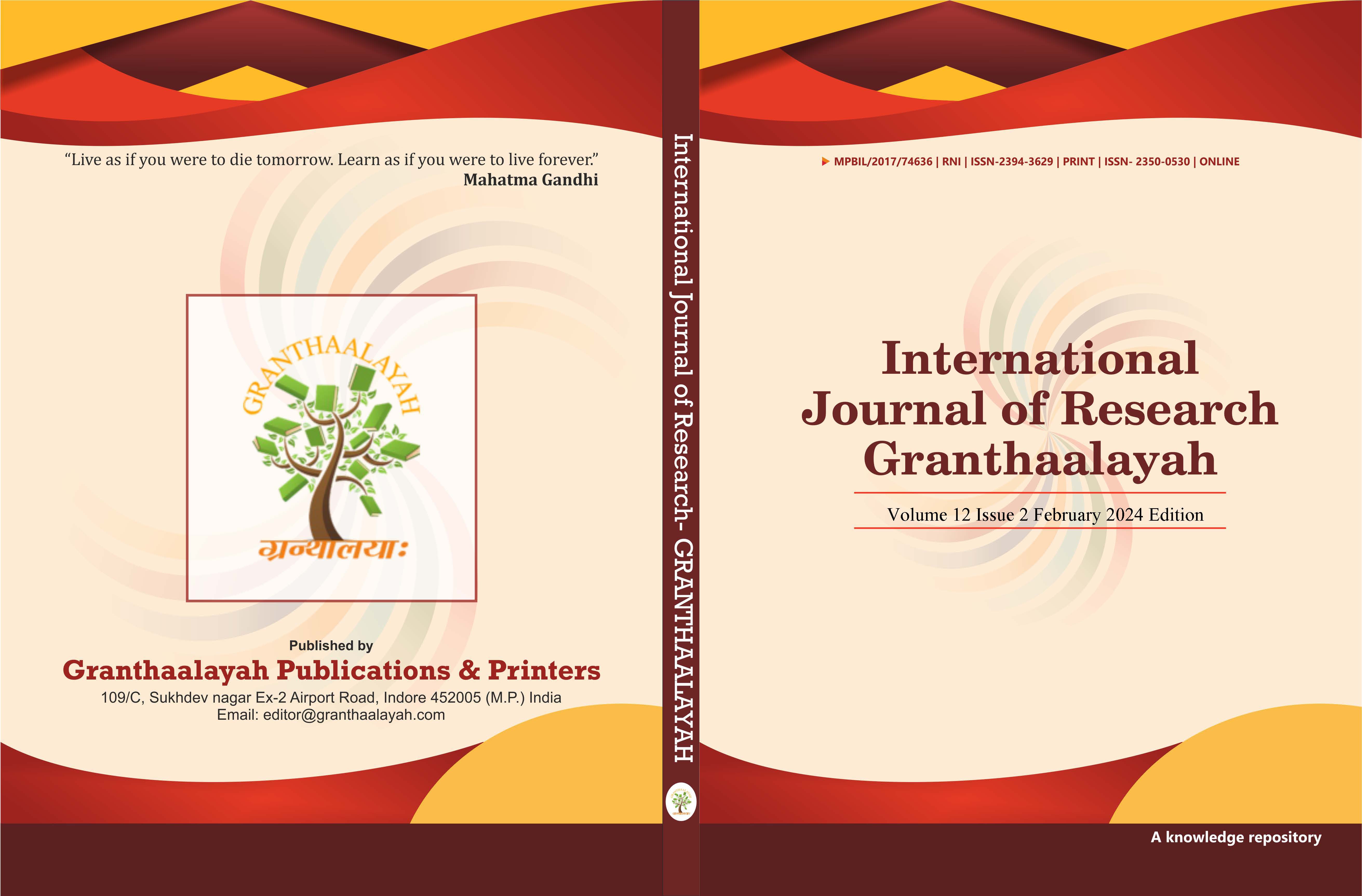FLOATING OFFSHORE TURBINES - INSTALLATION METHODS
DOI:
https://doi.org/10.29121/granthaalayah.v12.i2.2024.5459Keywords:
Naval Architecture, Floating Wind, OffshoreAbstract [English]
Floating offshore wind turbines are a possible source of large scale electricity. Fabrication and offshore installation design of these large floating structures is required to provide confidence to developers and insurers that they are constructed in a safe and cost effective manner. The design methods developed in this paper cover the substructure types such as Spars, semi submersibles, barges and TLPs. The engineering of mooring types includes catenary, taut and tension, plus turret mooring.
This paper details the preparation of engineering requirements for installation vessels and large onshore cranes used for the shipyard construction of substructures for floating wind. Each installation phase, for a floating offshore wind turbine, raises issues regarding existing construction methods and the need to develop revised installation works.
The engineering processes include mooring installation and connection. In addition consideration of load-out analysis, ocean transportation analysis including sea-fastening, intact stability and tow motion response. Installation analysis is required for lifting, up-ending, afloat construction, and cable lay methods.
Floating offshore wind turbines are offering a new approach to using marine resources and this paper will provide information on how naval engineering can be used to promote this development.
Downloads
References
Blackfish (2020). Floating Offshore Wind, Installation Challenges, Operations and Maintenance.
Castro-Santos, L., & Diaz-Casas, V. (2016). Floating Offshore Wind Farms. https://doi.org/10.1007/978-3-319-27972-5. DOI: https://doi.org/10.1007/978-3-319-27972-5
Choisnet, T., Vasseur, S., & Rogier, E. (2018). Performance and Mooring Qualification in Floatgen : The First French Offshore Wind Turbine Project,Ideol SA, La Ciotat, France.
Construction Vessel Guideline for the Offshore Renewables Industry, Energy Institute (2014, September).
Crowle, A.P., & Thies, P.R. (2022, November 8th). Naval Architecture Methods For Floating Wind Turbine Installation. International Conference on Postgraduate Research in Maritime Technology, The Confederation of European Maritime Technology Societies (CEMT).
Crowle, A.P., & Thies, P.R. (2022). Floating offshore Wind Turbine - Heavy Construction Requirements, Trends in Renewable Energies Offshore - Proceedings of the 5th International Conference on Renewable Energies Offshore, RENEW 2022, 639-649. https://doi.org/10.1201/9781003360773-72 DOI: https://doi.org/10.1201/9781003360773-72
Efthimiou, L., & Mehta, A., (2022). Crash Course - Floating offshore Wind a Blog Series (Part 2), World Forum Offshore Wind.
Floating Offshore Wind Centre Of Excellence International Market Opportunities Summary Report (2022, May).
Gerwick, B. (2007). Construction of Marine and Offshore Structures, (3rd Ed.). https://doi.org/10.1201/9781420004571 DOI: https://doi.org/10.1201/9781420004571
Kaiser, M.J., & Snyder, B. (2011). Offshore Wind Energy Installation and Decommissioning Cost Estimation in the U.S. Outer Continental Shelf, Technical Report, US Dept. Of the Interior, Bureau of Ocean Energy Management, Regulation and Enforcement, Herndon. VA TA&R Study, 648, 340.
Ksenia Balanda et al (2022). The Role of the Local Supply Chain in the Development of Floating Offshore Wind Power. IOP Conference Series: Earth and Environmental Science. DOI: https://doi.org/10.1088/1755-1315/1073/1/012010
Lewis, P., & Laskowicz, T. (2023). Intelatus Global Partners, UK), Evolving Requirement For Floating Wind Installation Vessels, RINA-ABS Offshore Conference Aberdeen 2023.
Martini, M., Jurado, A., Guanche, R., & Losada, I. J. (2016). Evaluation of Walk-To-Work Accessibility for a Floating Wind Turbine. International Conference on Offshore Mechanics and Arctic Engineering. https://doi.org/10.1115/OMAE2016-54416 DOI: https://doi.org/10.1115/OMAE2016-54416
Ojo, A., Collu, M., & Coraddu, A. (2022). Multidisciplinary Design Analysis and Optimisation of Floating Turbine Structures: A Review, Ocean Engineering. https://doi.org/10.1016/j.oceaneng.2022.112727 DOI: https://doi.org/10.1016/j.oceaneng.2022.112727
Olsen, F., & Dyre, K. (1993). VIndeby Off-Shore Wind Farm-Construction and Operation. Wind Engineering, 17(3), 120-128.
Ramachandran, R., Desmond, C., Judge, F., Serraris, J., & Murphy, J. (2022). Floating Wind Turbines: Marine Operations Challenges and Opportunities, EAWE.
Salzmann, D. C., Prezzi, J., Ten Haaf, S., & Groenteman, S. (2015). Walk to Work Offshore Using Motion Compensated Gangways, in: OTC Brasil, OnePetro, https://doi.org/10.4043/26197-MS DOI: https://doi.org/10.4043/26197-MS
Santos, F. P., Teixeira, Â. P., & Soares, C. G. (2016). Operation and Maintenance of Floating Offshore Wind Turbines, in: Floating Offshore Wind Farms, Springer, 181-193, https://doi.org/10.1007/978-3-319-27972-5_10 DOI: https://doi.org/10.1007/978-3-319-27972-5_10
Shu, Y. (2022). Research on Prevent Failure and Key Technologies to Install Jib of Large Floating Crane. Australian Journal of Mechanical Engineering. https://doi.org/10.1080/14484846.2022.2108580 DOI: https://doi.org/10.1080/14484846.2022.2108580
Tremblay, M. (2021, October). New Insight into U.S. Regulations for Offshore Wind Vessels, North American Clean Energy, 15(5).
Published
How to Cite
Issue
Section
License
Copyright (c) 2024 Alan Philip Crowle

This work is licensed under a Creative Commons Attribution 4.0 International License.
With the licence CC-BY, authors retain the copyright, allowing anyone to download, reuse, re-print, modify, distribute, and/or copy their contribution. The work must be properly attributed to its author.
It is not necessary to ask for further permission from the author or journal board.
This journal provides immediate open access to its content on the principle that making research freely available to the public supports a greater global exchange of knowledge.

























